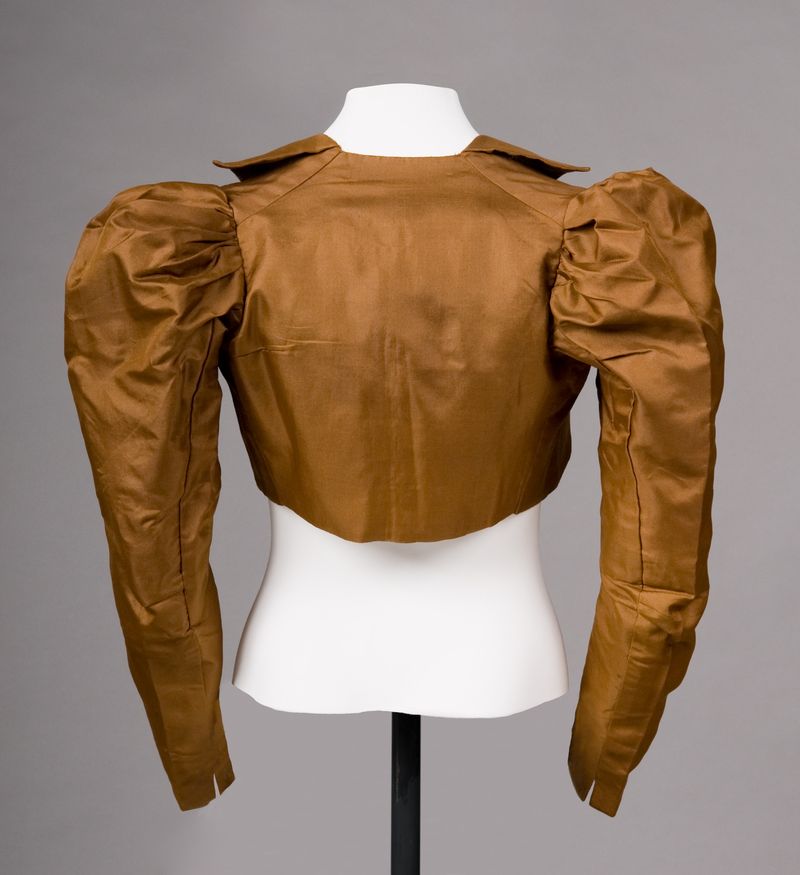 Jacket
Jacket
Silk faille
1894-98
Gift of the Manlove Family
S2006.870.32
In 1894, a Harper's Bazaar writer reporting from Paris was "struck with the popularity of the bolero."1 Among young Parisian women, short jackets paired with gored skirts and taffeta blouses were worn as street dresses, i.e. for activities that took place outside the home, such as shopping or visiting a cafe. In an attempt to pinpoint the origin of these jackets, the Harper's Bazaar reporter looked to the cafe waiters of Paris. As the garcons of Paris's many cafes typically wore short, open jackets with a rolled collar, the writer suggested that the jackets worn by Parisian women were most accurately named garcon de cafe jackets.
Regardless of their specific names, during the 1890s short jackets added variety to the feminine wardrobe. Similar to the jeans and T-shirt combo so ubiquitous today, the shirtwaist blouse and skirt were such a common pairing as to be almost a uniform.2 Women of limited or lower incomes were frequent wearers of the shirtwaist blouse because they could be made at home fairly easily or purchased ready-made at reasonable prices. With a dark skirt and 3-4 shirtwaist blouses, a woman had a full complement of clothing for work or home. A jacket, whether a bolero or cafe de garcon, added variety to this basic but functional wardrobe. Designed to be worn open, these jackets were cut short to expose a few inches of the shirtwaist blouse. Though shirtwaists and jackets were a particular boon to women of limited means, even haute couture designers such as Charles Worth presented versions of the shirtwaist and bolero style. In 1894, Worth presented a black bolero to be worn over a pink and black checked frock.3
The sleeve puff seen on the bolero-style jacket above is a characteristic of 1890s fashion. Beginning in the early years of the decade, sleeves grew and grew until they reached gigantic proportions about 1895-6. To create a full, ballooning silhouette, as much as 1 yard of material per sleeve was required. This 1894 image from The Delineator pictures full, puffed sleeves on otherwise sedate walking suits. As you can see from the image, the plain skirts of the period served as a visual counterbalance to the width of the sleeves.
1 De Forest, Katharine. "What Parisiennes are Wearing." Harper's Bazaar 20 Jan 1894: 42.
2 Warner, Patricia Campbell. When the Girls Came Out to Play: The Birth of American Sportswear. USA: Univ. of Massachusetts Press, 2006: 233.
3 "New York Fashions." Harper's Bazaar 24 Mar. 1894: 235.


